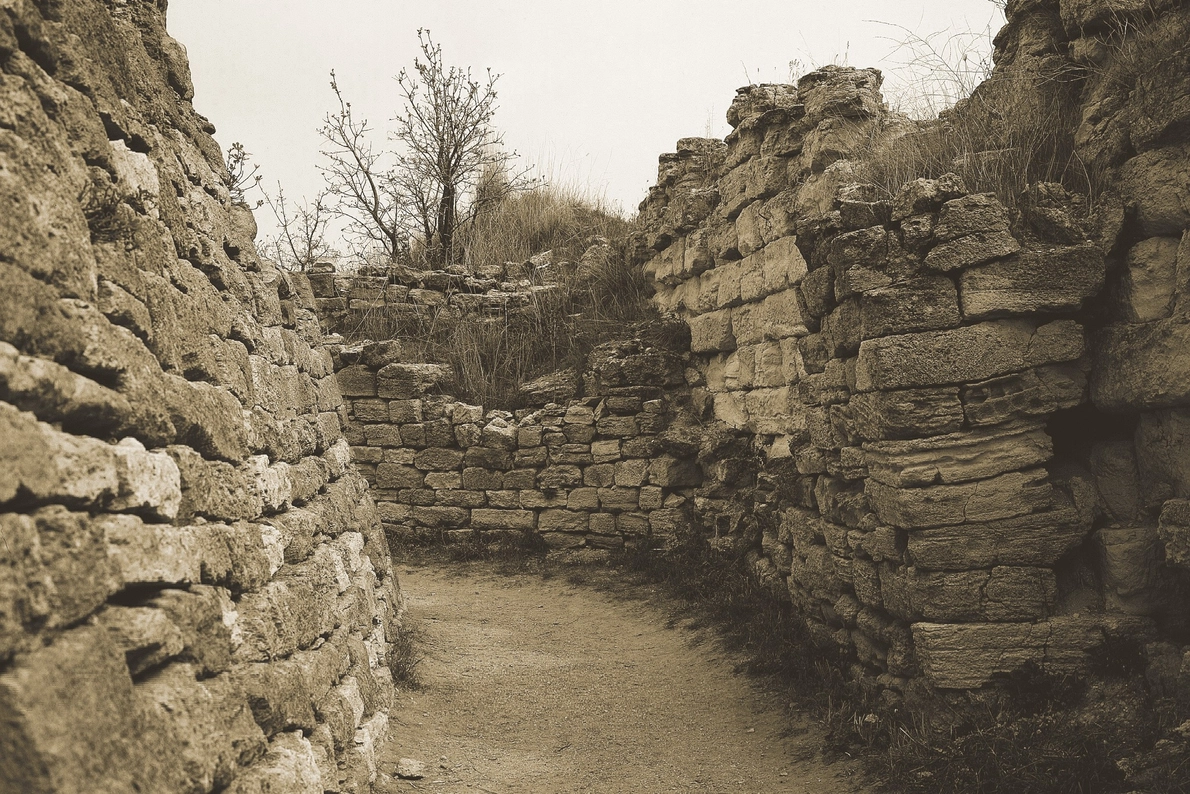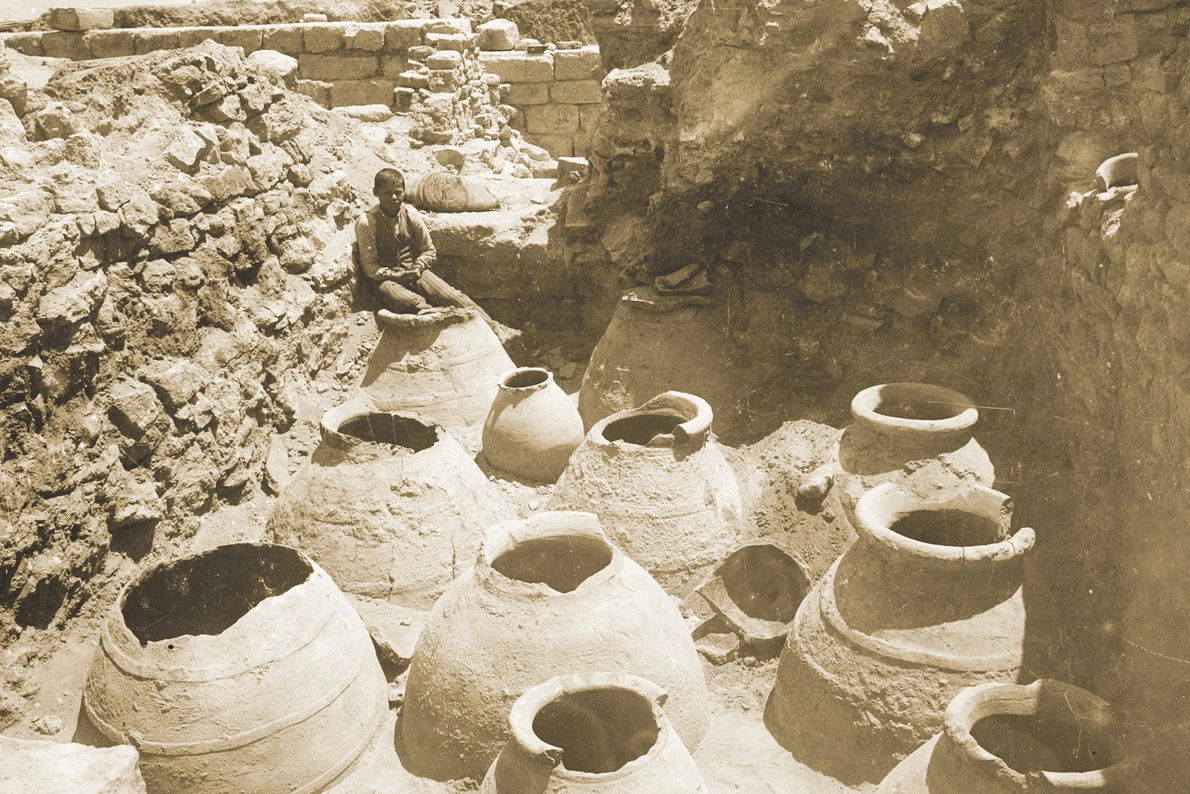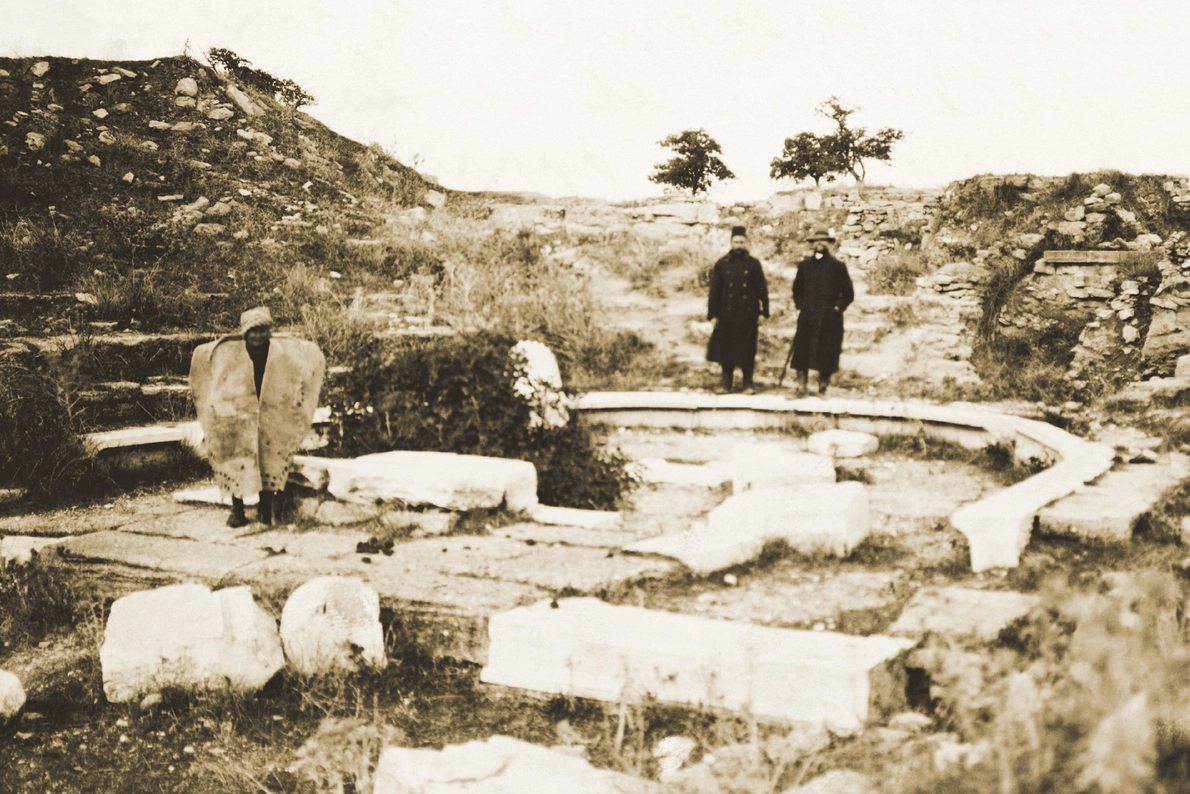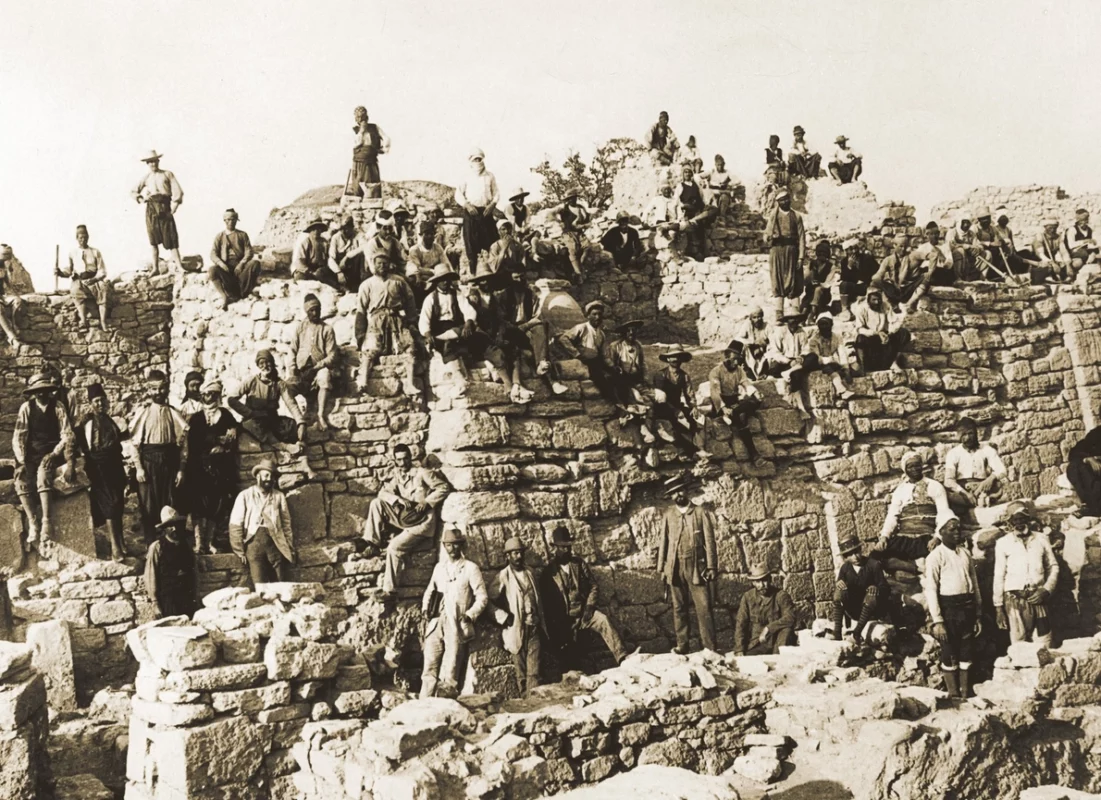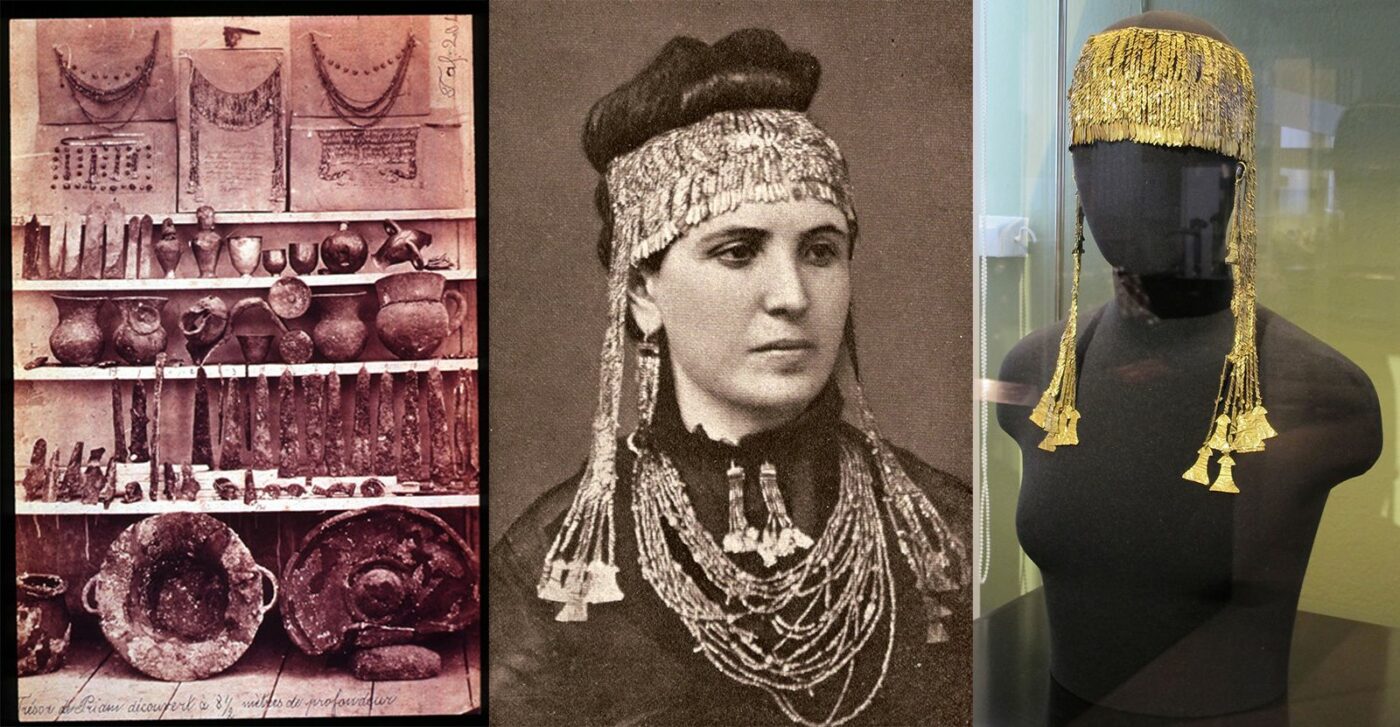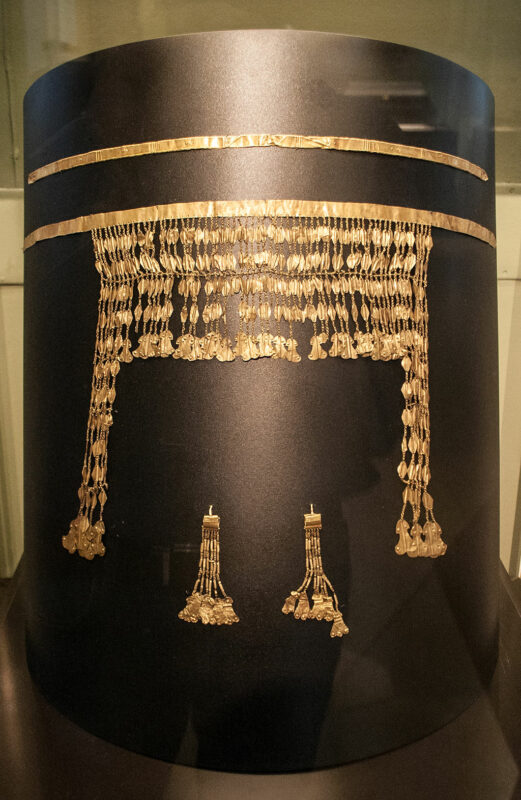Heinrich Schliemann
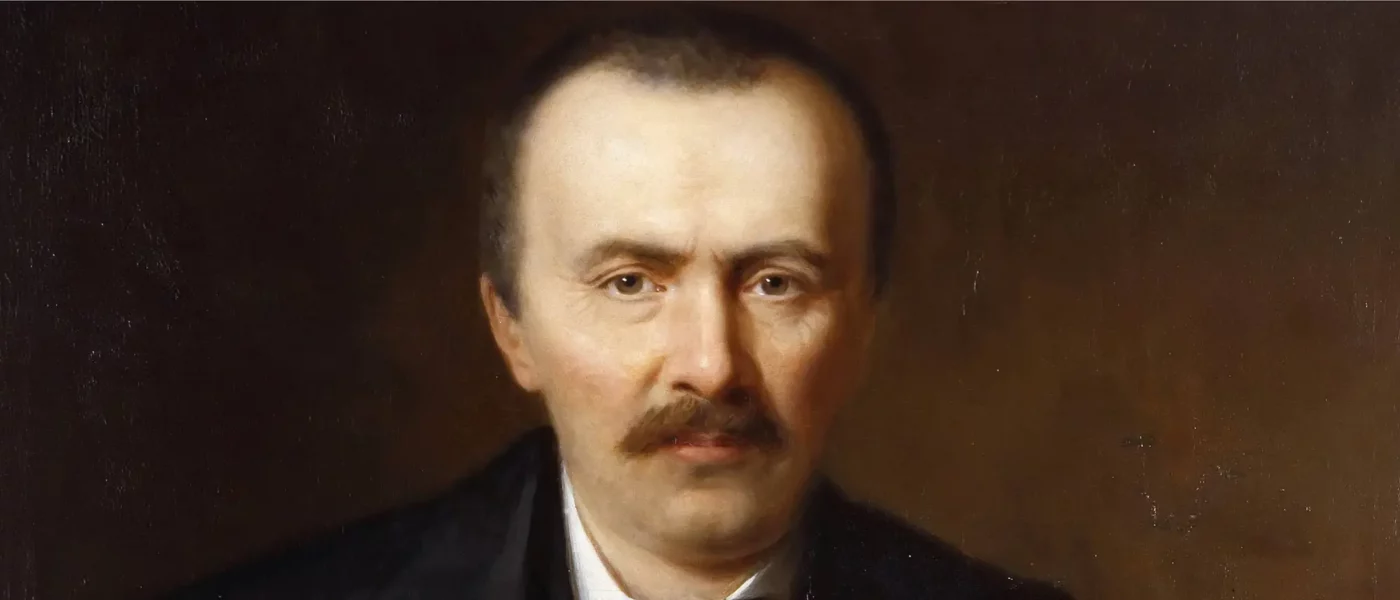
Who Was Heinrich Schliemann?
Heinrich Schliemann was born in Germany on the 6th of January 1822 and died on the 26th December 1890. He was a businessman and noted pioneer in the field of archaeology, with many of his practices and discoveries considered pioneering in his day.
Heinrich specialised in the archaeology of places mentioned in the works of Homer and excavated many sites considered important in Homeric prose, most notably Hisarlik, the presumed site of the fabled city of Troy, and Mycenae, the home of King Agamemnon.
His work wasn’t without controversy though and some of his methods of excavation have since been criticized as destructive. This criticism, however, has failed to dull the fact that Schliemann was one of the foremost pioneers of the study of the ancient Aegean civilizations of the Bronze Age.
The path to fame
Schliemann was born in Neubukow in Mecklenburg-Schwerin, which was part of the German Confederation, in 1822. His father was a Lutheran minister and his family were relatively poor by the standards of the day. His mother died when he was only 9 years old and after her death he was sent to live with his uncle. His father still kept close touch with his son and encouraged his interest in history by telling him tales of the Iliad and the Odyssey. It was these stories that started his fascination with ancient Greece and by the age of 7 he made the grand declaration that one day he would excavate the city of Troy.
Unfortunately, his family’s poverty made it impossible for him to acquire a university education. This didn’t deter him and by the age of 14 he was planning his future in archaeology. In later life, the lack of university education did, however, lead to a chasm in how Schliemann operated in comparison to educated professionals and led to conflict and friction.
Career as an archaeologist
In his early life, Schliemann worked for a number of companies and learnt many languages, including Russian, Latin, and Greek. It was this ability with languages that helped him become an important businessman in the importing trade and by the 1850’s he was a wealthy man after cornering the market in the indigo dye trade. By the age of 36 he was wealthy enough to retire and his attention turned to his love for Greek History and the claim he had made as a 7 year old to find the city of Troy.
To begin with Schliemann took an excavation party to Pınarbaşı in Turkey, the site commonly believed to be Troy. The site had previously been excavated but the soundings performed at the site proved to be disappointing. In fact, there was no real evidence that the site had any link to the ancient city at all and by the late 1860’s Schliemann had all but given up excavations at the site.
At the same time Frank Calvert, an amateur English archaeologist had started digging at a site not a huge distance away from Pınarbaşı in western Turkey at a place called Hissarlik and he was convinced that this was the location of the fabled city of Troy.
The “Discovery” Of Troy
Although Calvert was convinced, Schliemann was at first sceptical about the identification of Hissarlik as being the location of Troy and he was initially reluctant to travel to a new excavation site. But Calvert’s conviction soon won him over and by the early 1870’s Schliemann had taken over excavations on the eastern side of the Hissarlik site, with Calvert acting as his partner. No digging was allowed on the western half as the Turkish government owned that side and were unwilling to allow excavations.
Initial digs were rudimentary with no real prescribed method of archaeology in existence. Schliemann and his workers dug hastily through upper levels of dirt, sand and earth to reach deep down into the ground. Schliemann hypothesised that if this was indeed the location of Troy it would be found at the lower levels of the site. Calvert was not happy with the roughshod way that Schliemann and his workers handled the site and the two fell out, leaving Schliemann to take full control of the dig due to his greater financial resources.
In 1873 the excavation hit the jackpot as workers uncovered fortifications and remains of a city that Schliemann described as being of great antiquity and importance. A vast treasure of gold jewellery and vessels of bronze, gold, and silver were uncovered. Schliemann immediately believed he had found what he had been looking for, the ancient city of Homeric Troy. These claims proved to be a little premature and scholars later proved that the ruins predated the era and that he had in fact found Troy VI (the sixth layer of Troy) rather than Troy I (Homeric Troy and the lowest layer). Nevertheless, the items found had deep historical significance and were dated around 1500 BCE to 1000 BCE. This treasure was given the name Priam’s Treasure.
Priam’s Treasure
Years after discovering Priam’s Treasure, Schliemann wrote that he had seen the gold glinting in the dirt, so he dismissed the workmen for “paidos” (lunch break) so he could excavate the items himself to save them from theft. Whether this is true or not is unknown but what was true was that Schliemann had found a cache of items of great historical importance.
The treasure included gold and other artefacts that Schliemann initially assigned to the Homeric king Priam. This claim also proved to be folly and a by-product of Schliemann’s zeal, but the artefacts had historical significance all the same.
The collection was one of the largest and most important of all Greek discoveries and included copper shields, silver vases, gold diadems, 8750 gold rings, six gold bracelets, two gold goblets, a wrought gold bottle, and many other items.
Schliemann smuggled Priam’s Treasure out of Turkey, much to the anger of Turkish officials, who only found out when his wife Sophia, wore the jewels at a public event. The Ottoman government at the time revoked Schliemann’s permission to dig at the site and sued him for a share of the gold and other items. They were so angry by Schliemann’s actions and by the ineptitude of their own officials overseeing the dig, the head observer was given a prison sentence.
The Mycenae Excavation
Schliemann’s enforced hiatus saw him at a loss for things to do so he moved his entire dig team over the border into Greece to excavate the ancient Greek city of Mycenae. The link between Troy and Mycenae wasn’t lost on Schliemann and the urge to locate the historic home of King Agamemnon, the destroyer of Troy, was key to his decision to relocate. The Greek Archaeological Society, on the other hand, were not so keen on his presence in Greece and sent a government agent to monitor and oversee the dig.
He began excavations at Mycenae by digging near the Lion Gate and inside the citadel walls, where he found five shaft graves. Within the graves were 16 bodies and a large treasure of gold, silver, bronze, and ivory objects. Schliemann believed he had found the tombs of Agamemnon and his wife Clytemnestra, and he wrote about the findings in his book, Mykenä. Again, this was later proven to be incorrect.
Schliemann spent the latter part of the 1870’s at Mycenae but his true love for Troy never left him and after trading some of the treasure he had accumulated with the Ottoman Empire, he was allowed to resume work at Hisarlık. For the next 12 years he excavated various parts of the site but with far less success than his earlier excavations. On Christmas Day 1890, while walking across a square in Naples, he collapsed and was taken to hospital where he died the next day.
Criticisms over Schliemann’s Practices
Many of Schliemann’s claims have proven to be false over time with scholars claiming he “was not very good at separating fact from interpretation.” That’s not to say the things he found had no value. They certainly did and would become some of the most significant findings of the ancient Aegean. Unfortunately, in his zeal to find Troy and its buried treasures, he was quick to jump to conclusions and make grand claims without the evidence to back them up.
Whilst his claims can be forgiven as good willed exaggerations, his excavation methods, on the other hand, are a much greater source of controversy. Many latter-day archaeologists have condemned his methods as destroying the layers of the real Troy below his own dig and being too brutal and unrefined in their nature.
Another bone of contention for many historians is how Schliemann never credited Frank Calvert for initially finding the location of Troy in any of his literary works.
The Final Word
There is no doubt that Heinrich Schliemann was a controversial archaeologist but that doesn’t detract from the impact he had on our understanding of ancient Greece. Without him the wonders of ancient cities like Troy and Mycenae could have been lost to history.

